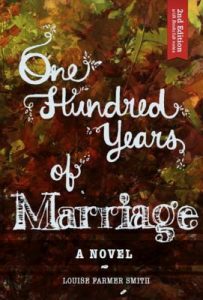 Patricia sacrifices her social life and romance to care for her mother, whom everyone assumes is going through “the change.” Patty knows better, but doesn’t know how to help her mother find herself after accommodating her husband their entire marriage. As she and her siblings come of age, they move on and away from their parents, becoming distinctly different individuals who come together in the end for Patty’s wedding. Told in short story form, going back generations, the women in Patty’s ancestry lay a foundation of accommodation and depression that she is determined to escape. The women in these stories are strong, but historical convention keeps them in check, and they don’t have the tools to continually fight social mores of gender expectations. The writing flows so well that the stories lead right into each other, though they can, and have (and won prizes), stand alone. Together, they show the pattern repeated by each generation of women in choosing partners to “save” them from their families, judging poorly based on immediate escape. That they stay with their ill choices is more a matter of their time in history, as shown by Patty’s mother being unable to get a driver’s license without her husband’s or father’s permission.
Patricia sacrifices her social life and romance to care for her mother, whom everyone assumes is going through “the change.” Patty knows better, but doesn’t know how to help her mother find herself after accommodating her husband their entire marriage. As she and her siblings come of age, they move on and away from their parents, becoming distinctly different individuals who come together in the end for Patty’s wedding. Told in short story form, going back generations, the women in Patty’s ancestry lay a foundation of accommodation and depression that she is determined to escape. The women in these stories are strong, but historical convention keeps them in check, and they don’t have the tools to continually fight social mores of gender expectations. The writing flows so well that the stories lead right into each other, though they can, and have (and won prizes), stand alone. Together, they show the pattern repeated by each generation of women in choosing partners to “save” them from their families, judging poorly based on immediate escape. That they stay with their ill choices is more a matter of their time in history, as shown by Patty’s mother being unable to get a driver’s license without her husband’s or father’s permission.
The tales in this book depict would-be heroines succumbing the constraints of patriarchal society, straining to be free. That Patty’s father has a “heart attack” when her mother announces that she is leaving him will be familiar to many women. Thus she stays out of obligation, a heart-rending decision.